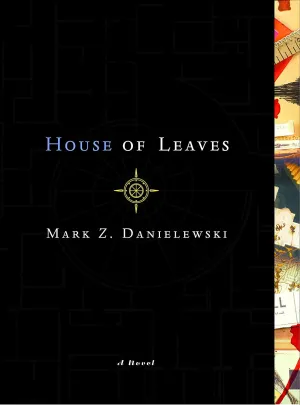Nox is a profound exploration of loss, mourning, and the process of translation, which is printed on a forty-foot-long scroll that unfolds like an accordion to mimic the non-linear, disjointed process of grief.
Its cumbersome, disorienting physicality is an experiential metaphor for how the bereaved seek closure by navigating a maze of memories, frustrations, and regrets—all while exiled in an emotional wilderness.
And it comes in a cool box.
Context and Background
Nox is a profound reflection on loss and the process of mourning. The work, however, far surpasses the traditional boundaries of poetry.
It takes the form of an accordion-style book housed in a box, where Anne Carson presents a collage of letters, photographs, sketches, and poems to chronicle her grief following her estranged brother’s death.
The book’s form and content, in their intertwining, create a physical representation of the labyrinthine process of grief.
Textual Influences
One of the key influences shaping Nox is the work of the Roman poet Catullus. Specifically, his ‘poem 101’, an elegy for his deceased brother, finds a parallel in Carson’s journey of mourning.
The Latin poem serves as a structural and thematic backbone for Nox, with Carson meticulously dissecting each word of the poem and meditating on its meanings and connotations.
Authorial Inspiration
Carson’s work is also influenced by the writings of Samuel Beckett and Ezra Pound, both of whom she cites as inspirations for her exploration of the process of translation.
Analysis of Nox by Anne Carson
Beyond the textual influences, Nox is deeply embedded in Carson’s personal life.
The work is a response to the death of her brother, Michael, who had been estranged for years, living a life of obscurity under false identities.
His death in Copenhagen and the subsequent revelation to Carson serve as catalysts for the creation of Nox, a personal epitaph and an exploration of absence.
Themes and Symbols
The themes of Nox are manifold, encompassing loss, grief, the elusiveness of understanding, and the process of translation.
The book is imbued with the symbol of Nox, or night, representing the unknowable, the inaccessible, and the realm of loss and death.
Form and Structure
Nox is printed on a single sheet of paper that unfolds like an accordion, creating a forty-foot-long scroll.
The book’s form is a physical representation of the labyrinthine process of grief, where the reader must navigate the text in a non-linear fashion, piecing together fragments of Michael’s life and Carson’s memories.
There is no clear beginning or end, no linear narrative, and no clear resolution.
The book’s structure mirrors the process of mourning, where the bereaved must navigate a maze of memories and emotions to find a sense of closure.
The book’s form also reflects the process of translation, where the translator must piece together fragments of meaning to create a coherent whole.
Language and Imagery
Carson’s language in Nox is marked by her analytical approach, even when dealing with emotional themes such as loss.
Her imagery is often stark, grounded in the physicality of her brother’s absence.
Yet, it also reaches the heights of abstraction, particularly in her exploration of the Latin words from Catullus’ poem.
Ergodicity and Nox
Nox is a prime example of ergodic literature, where the reader must exert substantial effort to traverse the text.
The Author’s Offer
Nox embodies the principles of ergodic literature, where readers must exert substantial effort to traverse the text.
Carson offers an interactive reading experience, encouraging readers to physically manipulate the book and engage with its multi-layered narrative.
The Reader’s Role
Readers of Nox are not mere consumers of the text; they become co-creators of meaning.
Whether piecing together fragments of Michael’s life or grappling with the nuances of Latin words, readers are active participants in the unfolding narrative.
Anne Carson on Nox
Art Beyond Therapy
For Carson, Nox is not a therapeutic exercise but an artistic exploration.
She engages with grief and loss as a poet and translator, not seeking solace but striving for comprehension and expression.
Expression vs. Therapeutic Exercise
In Nox, expression takes precedence over therapeutic relief.
Carson doesn’t use the book as a means to heal but as a platform to express complex emotions and meditate on the multiplicities of loss, translation, and history.
Approximate Analogues
While unique in its form and content, Nox shares similarities with works like W.G. Sebald’s ‘Austerlitz’, where personal histories intertwine with larger historical narratives.
Similarly, the ergodic nature of Nox echoes works like Mark Z. Danielewski’s ‘House of Leaves’, challenging traditional reading experiences.
Wrapping Up
In conclusion, Anne Carson’s Nox is a masterwork of ergodic literature, offering a profound exploration of the intricate intersections of personal loss, poetic translation, and historical narratives.
It stands as a testament to Carson’s unparalleled ability to bridge the gap between the classical and the contemporary, the personal and the universal.


